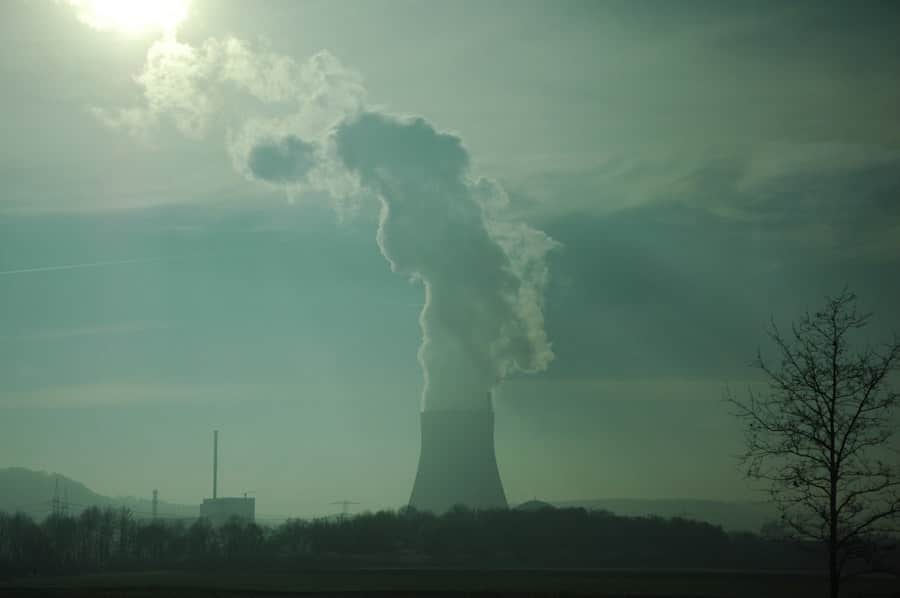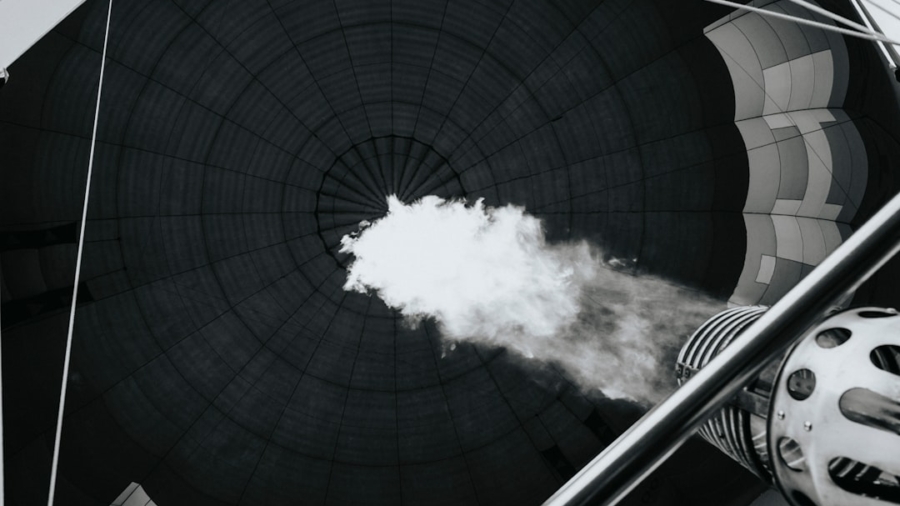Nuclear propulsion represents a transformative leap in the realm of space exploration, particularly for deep space missions. Traditional chemical propulsion systems, while effective for launching spacecraft from Earth and maneuvering within the inner solar system, face significant limitations when it comes to long-duration missions beyond Mars. The vast distances involved in reaching outer planets or even interstellar destinations necessitate a propulsion system that can provide sustained thrust over extended periods.
Nuclear propulsion, with its ability to generate high levels of energy and efficiency, emerges as a compelling solution to these challenges. The concept of nuclear propulsion encompasses various technologies, including nuclear thermal propulsion (NTP) and nuclear electric propulsion (NEP). NTP utilizes a nuclear reactor to heat a propellant, such as hydrogen, which is then expelled to produce thrust.
This method can potentially offer a specific impulse—an efficiency measure of rocket propellants—significantly higher than that of conventional chemical rockets. On the other hand, NEP employs nuclear reactors to generate electricity, which powers ion or Hall-effect thrusters. These systems can operate continuously for long durations, making them ideal for deep space missions where prolonged thrust is essential.
The potential applications of these technologies are vast, ranging from crewed missions to Mars to ambitious plans for exploring the outer planets and beyond.
Key Takeaways
- Nuclear propulsion has the potential to revolutionize deep space travel by providing faster and more efficient propulsion systems for spacecraft.
- Advantages of nuclear propulsion for deep space missions include higher thrust, longer operational lifetimes, and the ability to reach distant destinations in shorter timeframes.
- Challenges and concerns of nuclear propulsion in space exploration include safety, radiation exposure, and potential environmental impact in the event of accidents or failures.
- Current research and development in nuclear propulsion technology is focused on improving efficiency, safety, and reliability of nuclear propulsion systems for future space missions.
- The role of nuclear propulsion in future space missions is expected to expand, with potential applications in crewed missions to Mars, outer planet exploration, and interstellar travel.
Advantages of Nuclear Propulsion for Deep Space Missions
One of the most significant advantages of nuclear propulsion is its ability to provide a higher specific impulse compared to traditional chemical rockets. This increased efficiency translates into reduced fuel requirements, allowing spacecraft to carry more payload or extend their operational range. For instance, a nuclear thermal rocket could achieve a specific impulse of around 900 seconds, compared to approximately 450 seconds for the best chemical rockets.
This efficiency not only reduces the amount of propellant needed but also shortens travel times to distant destinations, which is crucial for crewed missions where the health and safety of astronauts are paramount. Moreover, nuclear propulsion systems can operate continuously for extended periods without the need for frequent refueling. This characteristic is particularly advantageous for missions that require long-duration thrust, such as those aimed at reaching the outer planets or conducting extensive scientific investigations in deep space.
For example, a spacecraft equipped with nuclear electric propulsion could gradually accelerate over months or even years, allowing it to reach high velocities that would be unattainable with conventional propulsion methods. This capability opens up new possibilities for mission design, enabling more ambitious exploration objectives and the potential for returning samples from distant celestial bodies.
Challenges and Concerns of Nuclear Propulsion in Space Exploration

Despite its promising advantages, nuclear propulsion technology faces several challenges and concerns that must be addressed before it can be widely adopted for space exploration. One of the primary challenges is the technical complexity involved in developing reliable and safe nuclear systems for use in space. The design and construction of nuclear reactors that can withstand the harsh conditions of space travel while ensuring the safety of crewed missions require significant advancements in engineering and materials science.
Additionally, the integration of these systems into spacecraft must be carefully managed to prevent any potential failures that could jeopardize missions. Another major concern revolves around the public perception and regulatory landscape surrounding nuclear technology. The use of nuclear propulsion in space raises questions about safety, particularly regarding the potential for accidents during launch or re-entry phases.
The fear of radioactive contamination in the event of a launch failure has historically led to public opposition against nuclear-powered spacecraft. Furthermore, international treaties and regulations governing the use of nuclear materials in space must be navigated carefully to ensure compliance and foster global cooperation. Addressing these concerns will require transparent communication with the public and robust safety protocols to build trust in nuclear propulsion technology.
Current Research and Development in Nuclear Propulsion Technology
Research and development efforts in nuclear propulsion technology have gained momentum in recent years, driven by the increasing interest in deep space exploration. NASA’s Nuclear Thermal Propulsion (NTP) project is one such initiative aimed at advancing this technology. The agency has been conducting tests on reactor designs and propellant systems to evaluate their performance and safety.
In 2021, NASA successfully completed a series of ground tests on a prototype reactor designed for NTP applications, demonstrating its capability to heat hydrogen propellant effectively.
For instance, the European Space Agency (ESA) has been exploring the potential of nuclear electric propulsion systems for future missions to Mars and beyond.
Collaborations between government agencies and private industry are becoming increasingly common as stakeholders recognize the need for innovative solutions to meet ambitious exploration goals. These partnerships are essential for pooling resources, expertise, and funding to accelerate the development of viable nuclear propulsion technologies.
The Role of Nuclear Propulsion in Future Space Missions
As humanity sets its sights on more ambitious space exploration goals, nuclear propulsion is poised to play a pivotal role in shaping future missions. The prospect of crewed missions to Mars is one area where nuclear propulsion could significantly enhance mission feasibility and safety. With reduced travel times and increased payload capacity, astronauts could embark on longer stays on the Martian surface while minimizing exposure to cosmic radiation during transit.
This capability would not only improve mission success rates but also facilitate more extensive scientific research on Mars. Beyond Mars, nuclear propulsion opens up possibilities for exploring the outer planets and their moons, such as Europa and Titan. These celestial bodies are believed to harbor conditions suitable for life or valuable resources that could support future human endeavors in space.
A spacecraft equipped with nuclear propulsion could conduct detailed reconnaissance missions, enabling scientists to gather data on these distant worlds more efficiently than ever before. Furthermore, the potential for interstellar missions becomes more tangible with advancements in nuclear propulsion technology, allowing humanity to explore beyond our solar system in search of habitable exoplanets.
Ethical and Environmental Considerations of Nuclear Propulsion in Space Travel

The deployment of nuclear propulsion technology in space travel raises important ethical and environmental considerations that must be carefully evaluated. One primary concern is the potential impact on human health and safety associated with launching nuclear materials into space. While stringent safety protocols can mitigate risks during launch and operation, any failure could have catastrophic consequences not only for astronauts but also for populations on Earth if radioactive materials were released into the atmosphere.
Additionally, there are environmental implications associated with mining and processing uranium or other fissile materials used in nuclear reactors. The extraction process can lead to habitat destruction and pollution if not managed responsibly. As such, it is crucial that any advancements in nuclear propulsion technology are accompanied by comprehensive assessments of their environmental footprint throughout their lifecycle—from resource extraction to end-of-life disposal.
International Collaboration and Regulation in the Development of Nuclear Propulsion
The development and deployment of nuclear propulsion technology necessitate robust international collaboration and regulation due to its complex nature and potential global implications. Various international treaties govern the use of nuclear materials in space, including the Outer Space Treaty and the Treaty on Principles Governing the Activities of States in the Exploration and Use of Outer Space. These agreements emphasize peaceful uses of outer space and prohibit the placement of nuclear weapons in orbit.
Collaboration among nations is essential not only for ensuring compliance with these treaties but also for sharing knowledge and resources that can accelerate advancements in nuclear propulsion technology. Joint ventures between countries can lead to more efficient research programs and foster innovation through diverse perspectives. For example, partnerships between NASA, ESA, Roscosmos (the Russian space agency), and other national space organizations could facilitate shared testing facilities or collaborative missions that leverage each agency’s strengths.
The Future Outlook for Nuclear Propulsion in Deep Space Exploration
Looking ahead, the future outlook for nuclear propulsion in deep space exploration appears promising as technological advancements continue to unfold.
As these technologies mature, they will become integral components of mission architectures designed for ambitious exploration goals.
Moreover, as humanity’s aspirations extend beyond our solar system toward interstellar travel, nuclear propulsion may serve as a critical enabler for such endeavors. Concepts like Project Orion—a theoretical spacecraft propelled by nuclear explosions—illustrate how innovative thinking can push the boundaries of what is possible in space travel. While challenges remain regarding safety, public perception, and regulatory frameworks, ongoing dialogue among scientists, policymakers, and the public will be essential in shaping a future where nuclear propulsion plays a vital role in humanity’s quest to explore the cosmos.
In exploring the advancements in space technology, particularly the potential of nuclear propulsion for deep space travel, it’s essential to consider the broader technological landscape that supports such innovations. An interesting related article is SmartSender: Your Chatbot Platform for Seamless Customer Interactions. While this article focuses on chatbot technology, the underlying theme of leveraging advanced technology to enhance efficiency and interaction can be paralleled with the goals of nuclear propulsion in space exploration. Both fields aim to push the boundaries of current capabilities, whether in communication or space travel, to achieve unprecedented results.
FAQs
What is nuclear propulsion for deep space travel?
Nuclear propulsion for deep space travel involves using nuclear energy to propel spacecraft through space. This technology offers the potential for faster travel and greater efficiency compared to traditional chemical propulsion systems.
How does nuclear propulsion work for deep space travel?
Nuclear propulsion typically involves using a nuclear reactor to heat a propellant, such as hydrogen, to high temperatures. The heated propellant is then expelled at high velocities to generate thrust and propel the spacecraft forward.
What are the potential benefits of nuclear propulsion for deep space travel?
Nuclear propulsion offers the potential for faster travel times, increased payload capacity, and the ability to reach distant destinations within our solar system and beyond. It could also enable longer-duration missions and reduce the reliance on Earth-based resources for propulsion.
What are the challenges and risks associated with nuclear propulsion for deep space travel?
Challenges and risks include the development of safe and reliable nuclear reactor technology for space use, potential environmental and safety concerns, regulatory and political hurdles, and public perception of nuclear power in space.
What are some current developments and future prospects for nuclear propulsion in deep space travel?
NASA and other space agencies are actively researching and developing nuclear propulsion technologies for potential use in future deep space missions. Concepts such as nuclear thermal propulsion and nuclear electric propulsion are being explored for their potential to revolutionize deep space travel.

